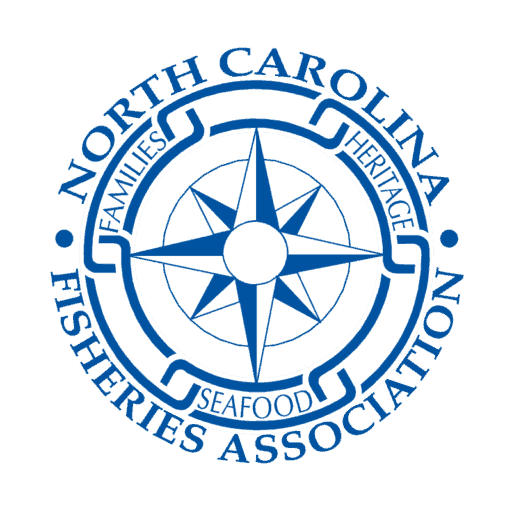NCFA BOARD AND STAFF WISH YOU ALL A SAFE AND HAPPY 4TH OF JULY!!
Recreational Elitism Under the Guise of Conservation
Last week I gave an overview of a lawsuit recently filed by commercial fishermen and fish buyers that laid out their claims that the Secretary of Commerce (Secretary) and the National Marine Fisheries Service (NMFS) has failed to rebuild the South Atlantic red snapper population by refusing to address the recreational dead discard problem.
As you could hopefully tell from my summary of this case, South Atlantic red snapper has not met management standards for a sustainable population for a long time and the only thing done to “help” the stock since 1983 has been to severely reduce the number of commercial fishermen allowed to harvest red snapper and reducing overall harvest, recreational and commercial, to almost nothing since 2010.
If my math is right, that’s going on 40 years of “harvest management” with the last 13 years seeing severely limited harvest. Yet here we are, still overfished with overfishing occurring. With over a decade of very little allowable harvest and an estimated 92% of all removals since 2010 having been dead discards you would think it would be past time to start working on the dead discard problem, right?
Well, the South Atlantic Fisheries Management Council (Council), their Science and Statistical Committee (SSC), and the Southeast Regional Administrator (Andy Strelcheck) have all stated very clearly and on multiple occasions that the South Atlantic red snapper stock will not rebuild without substantially reducing overall removals, including recreational dead discards. In fact, during the June 2022 SAFMC meeting the Council was informed (from their SSC and Mr. Strelcheck) that spatial and temporal depth-based closures were the only way to achieve the reduction in removals needed to rebuild the stock and allow greater harvest of red snapper in the future. The Council requested analysis of such closures to be presented as a management option at their next meeting.
But the analysis of these closures that was needed to help rebuild our red snapper population was never even presented. The outcry from groups like the Coastal Conservation Association (CCA), American Sportfishing Association (ASA), and other recreational fishing industry representatives did nothing but twist the facts and upset the orderly process of fisheries management to serve their agenda. Regrettably, the Council and management decided not to investigate how effective this closure could have been for the red snapper stock.
These groups wrote magazine articles, made social media posts, and CCA sent out “calls to action” about how “NOAA Fisheries is attempting to force massive time and area closures that would result in severe, negative economic and cultural impacts to recreational fishing, boating, and coastal communities in the South Atlantic in order to prevent red snapper mortality even as bycatch.”
This one statement alone tells you these groups care nothing about the health of our fish stocks, the only things they care about are money and unrestricted access. These groups do not even care if anyone gets to harvest a fish. If they did, they would have spoken out a decade ago during the early years of the low harvest and no harvest seasons.
But guess what, they do not care if anyone ever harvests and eats a fish again, as long as people keep buying boats and fishing tackle. Oh, and keep those donations coming.
Think about it. For years multiple species of bottom fish have been experiencing the same over exploitation and dead discards has resulted in very low allowable harvest. Seasons and bag limits have done nothing but get shorter and decrease on almost every snapper grouper species. With millions of recreational anglers in the South Atlantic region, the harvest limits on many of the species read like endangered species numbers.
For instance, in 2022 the recreational annual catch limit (ACL) for red snapper was 29,656 fish, for snowy grouper it was 5,315 fish, for golden tilefish fish it was 2,316 fish, for red grouper it was 90,720 fish. That’s not a lot of fish for millions of anglers to be sharing every year.
Never do I remember the CCA advocating for healthy fish stocks to increase bag limits. They always preach overfishing, overfished, bycatch, and rebuilding while pushing for reduced harvest, but as soon as area and time closures were being mentioned and 24-7 all-access catch-and-kill recreational fishing was being threatened these “conservation” groups start to get worried that people would stop buying boats and fishing tackle.
When catch-and-kill fishing and recreational industry sales are being threatened these buzz words suddenly seems to be less of a concern. In fact, a dead discard itself is nothing more than a glorified word for bycatch. If a fish is thrown over dead, does it matter if it was targeted or not? Recreational dead discards are trumping all other forms of removals in the majority of our fin fish stocks and it is not sustainable.
Our ocean is not a bass pond. Snapper grouper species are not made to be caught and released. Deep water fish have much higher release mortality rates than inshore species. Barotrauma kills millions of released fish every year. It is past time to address the waste created by recreational dead discards and rebuild our fish stocks. Hopefully this lawsuit will put the health of our fish stocks first and begin to address this ever-increasing dead discard problem.
Thomas Newman
Fisheries Liaison
